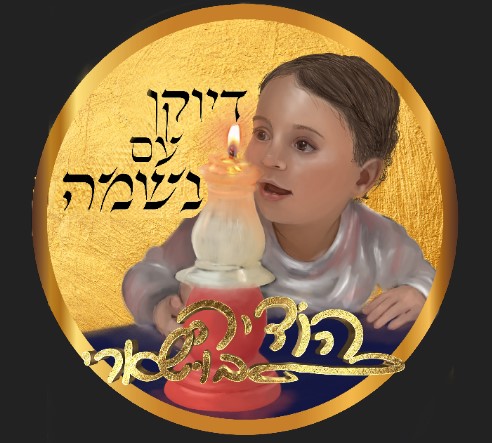"I Gave Up Tech and Rediscovered Painting the Righteous"
Hodaya Bouchari utilizes a unique method that allows her to create lifelike portraits. Learn about her decision to paint the Meron tragedy victims and the challenges she faces working without internet access or modern communication tools.
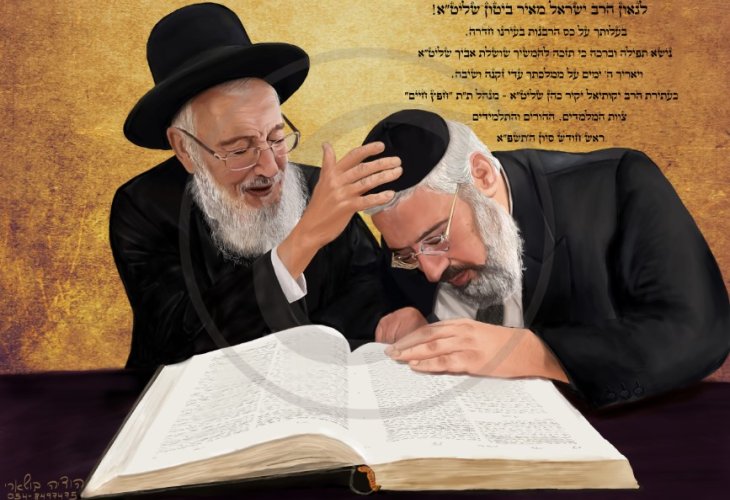 In the photo: The Biton Rabbis Shlit"a
In the photo: The Biton Rabbis Shlit"aA few days after the Meron disaster, amidst countless mourners visiting the homes of the victims' families, Hodaya Bouchari approached the home of Rabbi Shimon Matalon z"l from Beitar Illit, cautiously holding a large, impressive bag.
Hodaya is a talented artist from Netivot who decided to paint Rabbi Matalon and gift the portrait to his family. Rabbi Matalon was a teacher at a Talmud Torah, and Hodaya reached out to an acquaintance for his photos to create the lifelike painting.
Upon delivering the portrait on the last day of shiva, Hodaya was met with an overwhelmed family. "They were very touched," she recounts, "saying the painting brought them great comfort and captured his expression and smile perfectly. It made it all worth it."
Hodaya didn't stop there and later painted the Elhadad brothers z"l. "I combined two photos and added a symbolic hand behind them, conveying 'Mom, don't worry, I’m watching over my little brother.' Their mother remains in my heart, and I wanted to give her something strengthening. I added 'Psalm of Thanks' after discovering that Yossef David, the older brother, uttered it in his final moments. To me, there are no words more powerful to memorialize them."
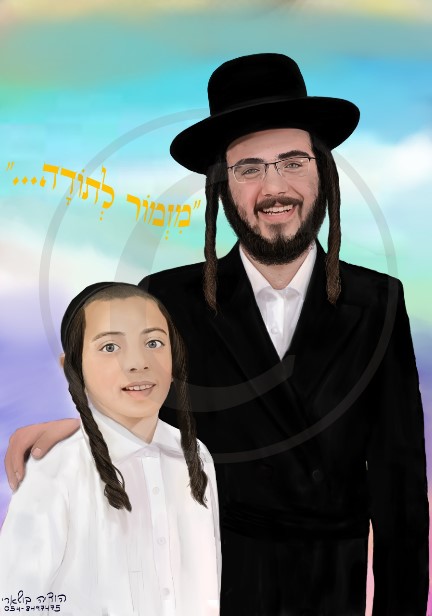 The Elhadad brothers z
The Elhadad brothers z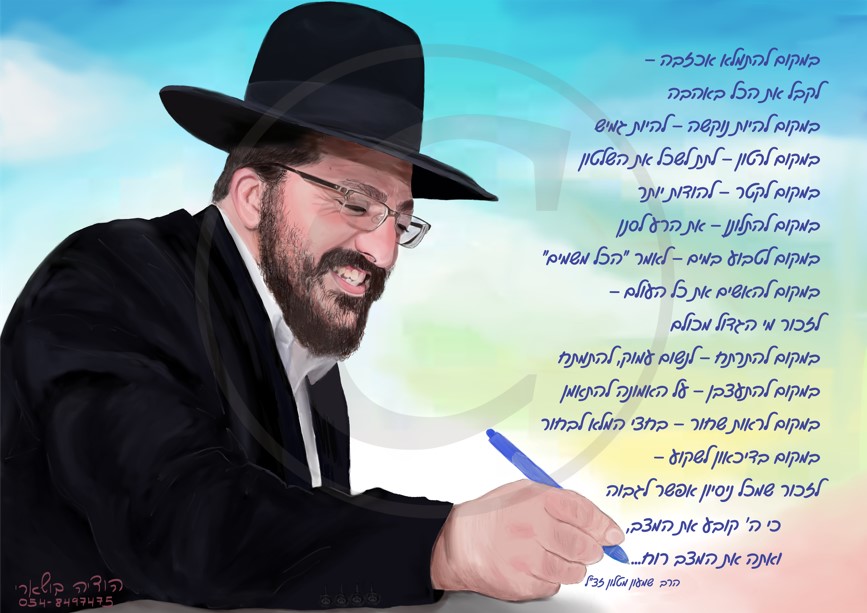 Rabbi Shimon Matalon z
Rabbi Shimon Matalon zA Painting That Is (Almost) a Picture
For fifteen years, Hodaya has been painting, but only recently has she advanced to 'digital illustration.' "It’s fundamentally different," she explains. "Digital illustration isn’t about oil paints or storage, it’s all done on a computer, but requires hand-drawing using a pen."
It's confusing. Is it manual or digital?
"It's indeed confusing to outsiders. Digital illustration involves a graphic tablet connected to a computer, allowing hand-drawing with a pen while viewing the result on screen, using virtual tools for colors and brushes."
It sounds simpler than oil painting...
"It might sound simpler, but it’s quite complex, often requiring over ten hours per painting to achieve quality. Unlike canvas painting, where errors are irreversible, digital allows layer-by-layer work, making corrections possible."
Hodaya emphasizes precision as key in digital art. "Accuracy is crucial when painting people, so I sample colors from the original photo for hair, eyes, and skin tone. I ensure every feature, even moles, is captured for authenticity, like the more than 50 moles on one subject’s face."
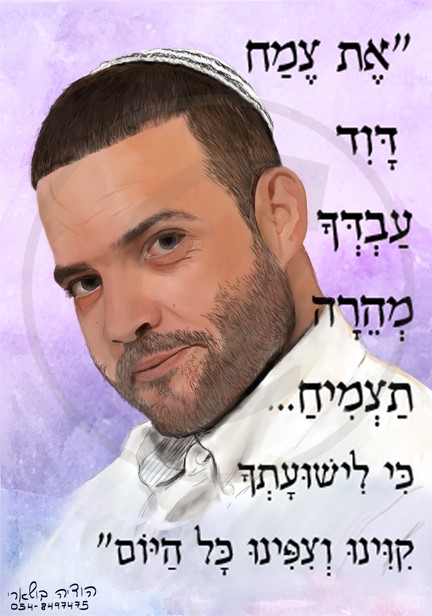 David Holtzman z
David Holtzman z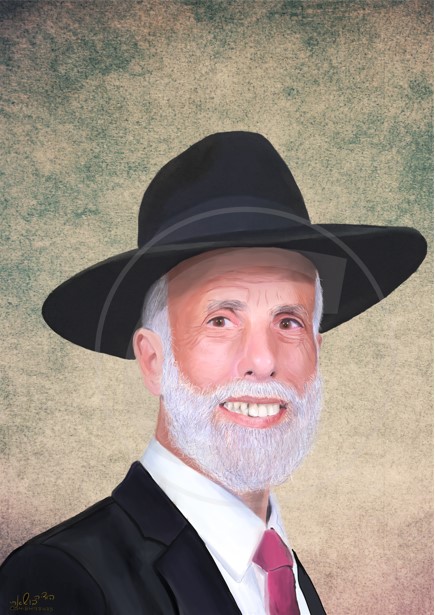 Rabbi Rachamim Moshe
Rabbi Rachamim MosheDrawing the Righteous
What is the primary challenge in your painting process?
"Sometimes people send low-quality images and expect a painting. I insist on high-quality pictures, preferably from professional events, to achieve realism."
A major challenge for Hodaya is her choice of a kosher computer without internet or WhatsApp, communicating strictly via email, which complicates client interactions.
"My rabbi emphasized relying on *Hashem* for success. I launched a website showcasing my artworks, excluding women due to their lifelike quality, following my rabbi's guidance."
"Since then," Hodaya shares emotionally, "I've received many commissions, particularly of righteous figures. It's heartening how word of mouth has spread about my work."
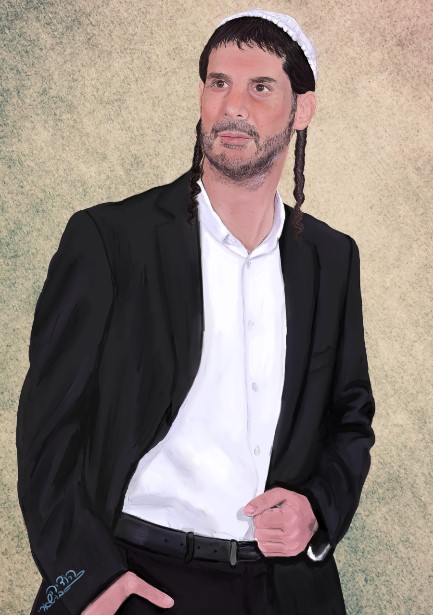 Menachem Nissan h
Menachem Nissan hPainting and Emotion
What was your first painting using this method?
"It was a black-and-white painting of me with my mother, with only our lips and some garment colors accentuated. I gifted it to her to express my gratitude, as she discovered and nurtured my talent."
Another memorable work is the portrait of Yosef Mordechai Kadush z"l, a young boy who endured much suffering. Hodaya painted him upon hearing of his passing, aiming to console his grieving family.
"I painted throughout the night and presented the large portrait during shiva, witnessing an emotional family reaction as they recognized their beloved son."
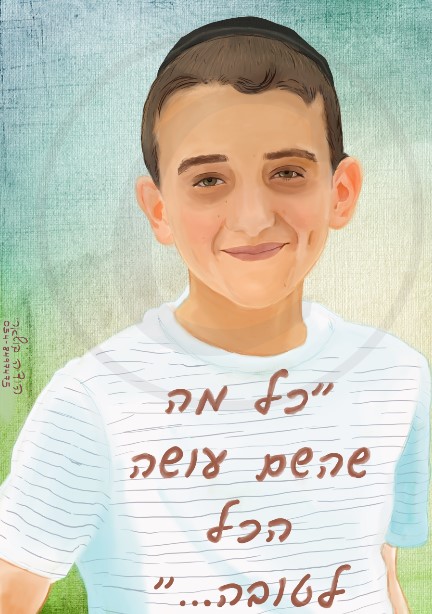 Yosef Mordechai z
Yosef Mordechai zHow do you find time to paint so much?
"As a mother of two, I primarily paint at night, often until early morning. I listen to faith-based music or recordings of those I'm painting, enhancing my connection to them."
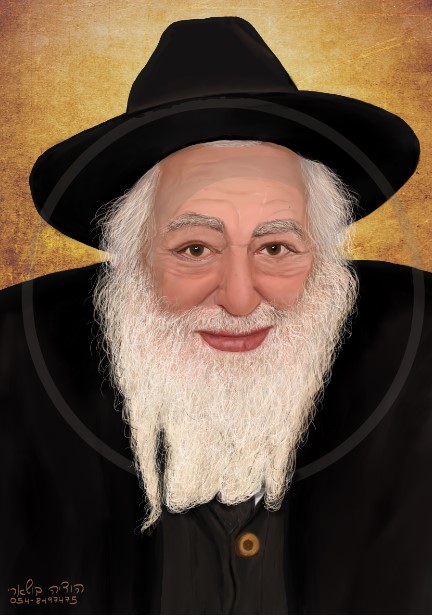 Rabbi Shimon Meir Ben Yaakov z
Rabbi Shimon Meir Ben Yaakov z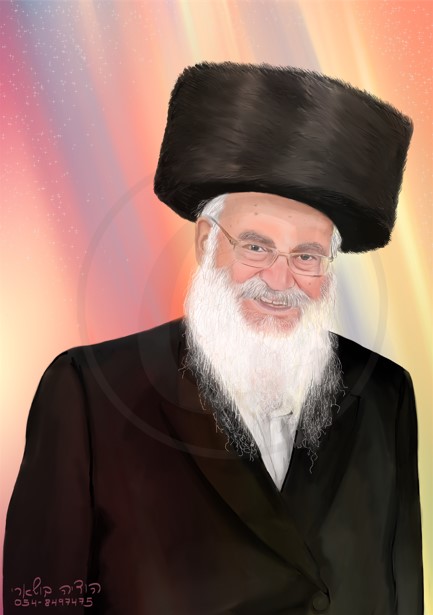 Rabbi Chaim Shaul Eisenstadt z
Rabbi Chaim Shaul Eisenstadt zWhat's your next step?
"My dream is to expand digital illustrations by overlaying traditional oil paint for a superior quality to meet high-end demand, maximizing the gift *Hashem* gave me."
